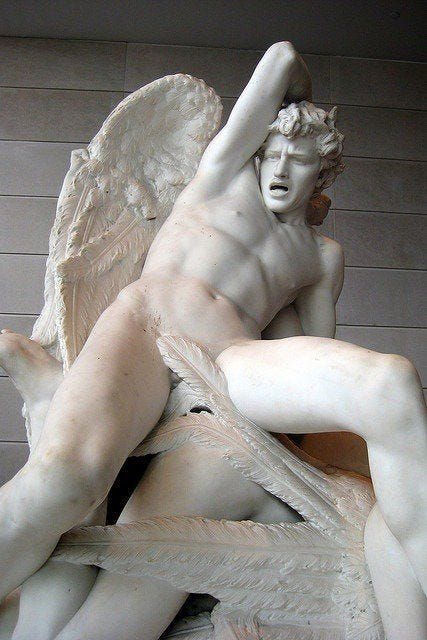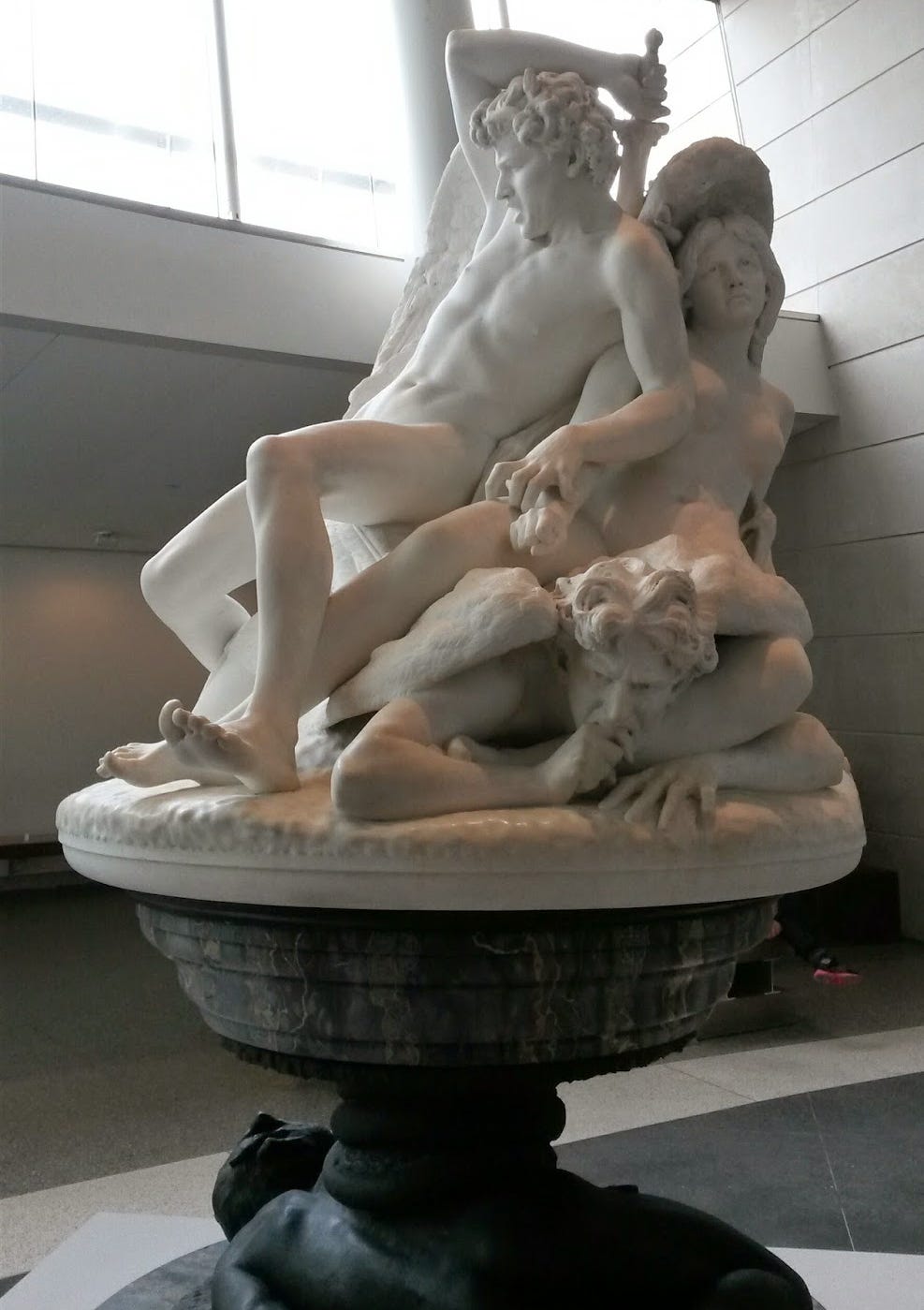The Fallen Angels, 1893
Salvatore Albano
Some sculptures demand contemplation. Others, like The Fallen Angels, seize your attention with sheer dramatic force.
This masterpiece, carved by Italian sculptor Salvatore Albano in 1893, captures a celestial rebellion frozen in marble, bronze, and shadow.
Albano, trained in Florence, was known for his technical precision and classical influences.
Though not as widely recognized today, he was a master of emotional intensity, transforming stone into figures that seem caught between movement and stillness.
This work reflects the 19th-century fascination with the sublime—the interplay of divine power, human ambition, and inevitable fall.
At its apex, a sword-wielding Satan, idealized yet tormented, struggles against an unseen divine army, his rebel angels entwined in anguish.
Below, a defeated figure (perhaps Satan again) lies crushed under a coiled serpent, snakes weaving through their hair as the only hint of their fall from grace.
Albano draws on ancient Roman storytelling, crafting a continuous narrative that spirals from heavenly war to infernal defeat.
Look closely: the angels’ classical beauty hides their rebellion, save for those serpentine clues.
It’s a reminder that truth lies in the details, even in art.







🫡